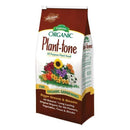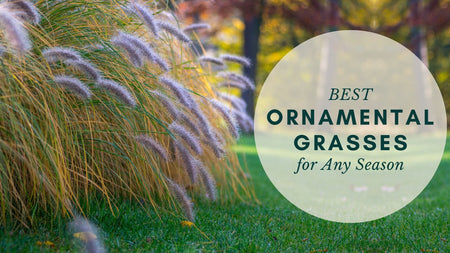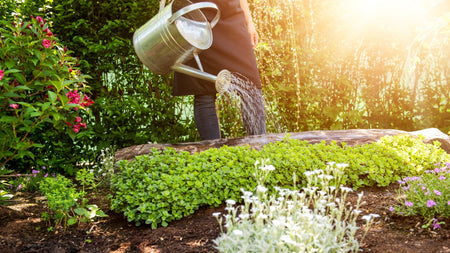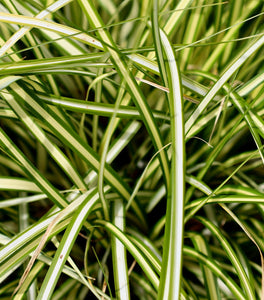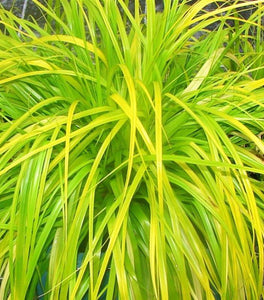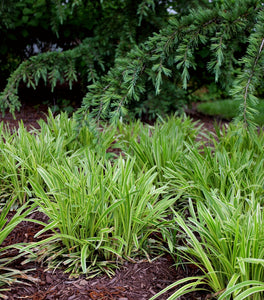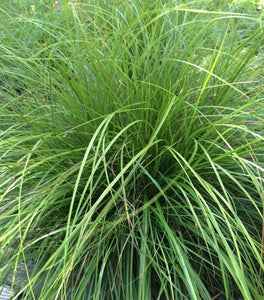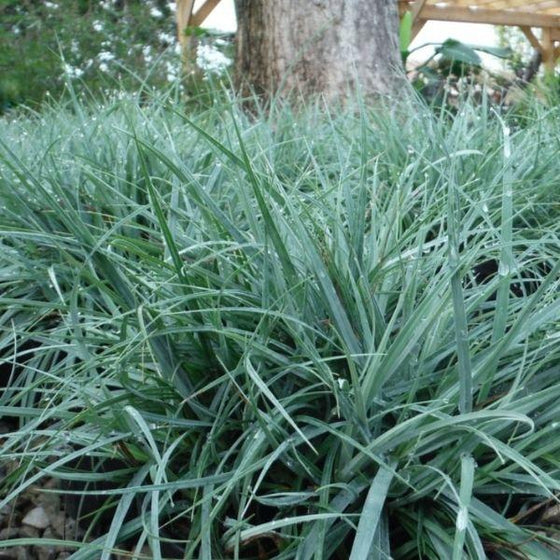
Images Depict Mature Plants
Carex Blue Zinger Plants for Sale Online
Carex Blue Zinger is a versatile, low-maintenance ornamental sedge known for its fine-textured, blue-green foliage that adds soft color and movement to any landscape. This perennial grass forms dense clumps that create a soothing, natural look in borders, mass plantings, or along water features. Its narrow, arching leaves provide year-round interest, making it a popular choice for adding texture and depth to gardens. Carex Blue Zinger thrives in both full sun and partial shade, offering flexibility in a variety of garden settings. Its ability to grow in moist, well-drained soils makes it ideal for rain gardens and low-lying areas.
Hardy in USDA Zones 5-9, Carex Blue Zinger can withstand a range of climates, from cooler northern zones to milder southern regions. This sedge reaches a mature height of 12-18 inches and spreads up to 18-24 inches, making it a great choice for ground cover or edging in perennial beds. While it tolerates both wet and dry conditions, it performs best in soils with consistent moisture, and its adaptable nature makes it suitable for everything from cottage gardens to modern, low-maintenance landscapes. Its blue-green hue adds contrast and complements other perennials, shrubs, and grasses in the garden.
In addition to its aesthetic appeal, Carex Blue Zinger is deer-resistant and provides habitat for pollinators, adding ecological benefits to your landscape. This easy-care sedge is perfect for erosion control on slopes and can even be used in containers for a striking effect on patios and decks. Whether you're looking for a durable ground cover or a unique accent plant, Carex Blue Zinger brings year-round beauty and functionality to a wide variety of garden designs.
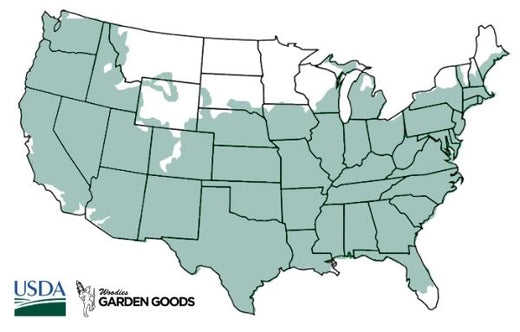
| Hardiness Zone: | 5-9 |
|---|---|
| Mature Height: | 12 to 18 Inches |
| Mature Width: | 18 to 24 Inches |
| Classification: | Perennial |
| Sunlight: | Full sun |
| Habit: | Upright, clump forming |
| Flower Color: | Inconspicuous |
| Flowering Season: | Summer |
| Foliage: | Steel-blue |
| Soil Condition: | Prefers average to moist soil |
| Water Requirements: | Water well until established |
| Uses: | Extremely attractive when used as a focal point in the mixed border, mass planting |
How to Care for Carex Blue Zinger
Be sure to read our planting instructions to ensure a healthy and happy Carex Blue Zinger for years to come!
How Do I Plant Carex Blue Zinger?
To plant Carex Blue Zinger, choose a location that offers full sun to partial shade and well-drained, moist soil for optimal growth. Begin by digging a hole twice the width of the root ball and slightly deeper than the container. Place the plant in the hole, ensuring the top of the root ball is level with the soil surface. Backfill with soil, gently firming it around the roots to eliminate air pockets. After planting, water thoroughly to help the roots settle, especially during the first growing season. This grass is adaptable to a variety of soil types, but it thrives best in consistently moist soils, making it ideal for rain gardens or areas with reliable moisture. When planting Carex Blue Zinger in your landscape, space the plants 12-18 inches apart to allow room for their mature spread of up to 18-24 inches. This spacing is perfect for mass plantings, ground cover, or as an accent in borders. For container plantings, use a pot with drainage holes and a high-quality potting mix to ensure proper drainage. Once established, Carex Blue Zinger requires minimal maintenance, making it a great choice for low-maintenance gardens. With its vibrant blue-green foliage, it provides year-round interest and pairs well with other shade-tolerant perennials or ornamental grasses.
How Do I water Carex Blue Zinger?
Watering Carex Blue Zinger is straightforward, especially since this versatile sedge thrives in moist, well-drained soils. During the first growing season, it's essential to water the plant regularly to help establish its root system. Aim to keep the soil consistently moist, but avoid waterlogged conditions. Deep watering once or twice a week is typically sufficient, depending on your local climate and rainfall. This will encourage strong root development and healthy growth. In particularly hot or dry weather, increase the frequency of watering to ensure the soil remains evenly moist. Once established, Carex Blue Zinger becomes more drought-tolerant, but it still prefers consistent moisture to thrive. While it can handle short dry spells, it will perform best when the soil is kept moderately moist. In rain gardens or areas with naturally damp soil, this ornamental grass will require little supplemental watering. However, in drier areas, occasional deep watering will help maintain its vibrant blue-green foliage and lush appearance. Regular monitoring of soil moisture is key to keeping Carex Blue Zinger healthy and vibrant in your landscape.
How Do I fertilize Carex Blue Zinger?
Fertilizing Carex Blue Zinger is a simple process, as this low-maintenance sedge generally thrives in average soils with minimal feeding. In early spring, apply a balanced, slow-release fertilizer (such as 10-10-10) to encourage healthy new growth and maintain its vibrant blue-green foliage. Spread the fertilizer evenly around the base of the plant, avoiding direct contact with the blades. Water thoroughly after application to help the nutrients penetrate the soil and reach the roots. Organic compost or a light top-dressing of composted manure can also be used as an alternative to synthetic fertilizers, providing a steady release of nutrients throughout the growing season. Once established, Carex Blue Zinger typically requires little additional fertilization, especially in rich or moderately fertile soils. However, if the plant is growing in particularly poor soil or shows signs of slow growth, you can provide a mid-season boost with a light application of compost or a low-nitrogen fertilizer. Avoid over-fertilizing, as this can lead to overly lush growth that detracts from the plant’s natural form and resilience. Keeping fertilization minimal allows Carex Blue Zinger to maintain its low-maintenance, eco-friendly appeal, making it a great choice for sustainable landscapes and rain gardens.

How Do I Prune Carex Blue Zinger?
Pruning Carex Blue Zinger is a simple yet important task to keep its blue-green foliage looking tidy and healthy. The best time to prune this ornamental sedge is in late winter or early spring before new growth begins. Using sharp garden shears, cut back the old, dead, or damaged leaves to about 2-3 inches above the ground. This helps remove winter-damaged foliage and encourages fresh growth for the upcoming season. By pruning early in the year, you give Carex Blue Zinger a clean start, allowing it to develop its dense clumps of vibrant blue-green blades. Throughout the growing season, Carex Blue Zinger generally requires minimal pruning. However, if any leaves become damaged or start to brown, you can trim them back to maintain the plant’s neat appearance. Regularly removing dead or unsightly foliage helps keep the plant looking fresh and vibrant year-round. In addition, dividing the plant every 2-3 years can prevent overcrowding and encourage healthy, new growth. With minimal maintenance, pruning Carex Blue Zinger enhances its natural beauty while promoting long-term health in your landscape.






